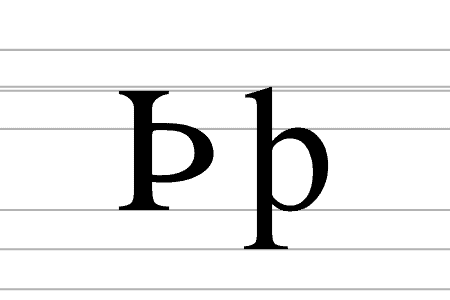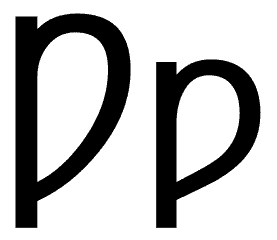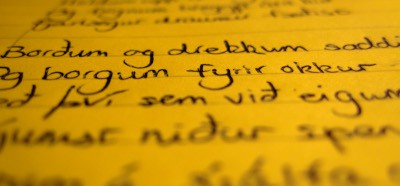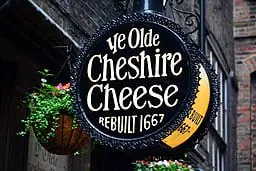English is a language with a long, rich history. If you read an English book written 500 years ago, you wouldn’t be able to understand anything in it! It’s true! It might surprise you to find out, but the English alphabet used to be a lot bigger. Throughout the many years that English has been around, it has gained and lost some letters in its alphabet.
Without a doubt, the best letter in English is thorn (Þ/ þ). This little letter put in a lot of work during English’s earlier times; It could replace common words like the and that. It is also surprisingly close to modern English Y. Thorn may be gone, but its legacy lives on even in popular culture.

You may have never seen the letter thorn before. That’s because this letter stopped being regularly used in English 700 years ago! Thorn looks like a mixture of p and b and it was replaced by “th” in words that have those sounds (θ/ð). Thorn is so cool that two different letters had to be used to replace the majesty of this single letter!
How was it used?
Thorn was a useful little letter in early English. It was used in a variety of different ways. Not only was it used as a regular letter to transcribe an English sound (like all other letters in English), but it also could stand in for entire words as a short hand.
Sound
As I said above, writers used it to represent the sound “th” (θ/ð). You can find this sound in words like thick, this, the, thumb, that, and yes, even the name itself, thorn! If we still had thorn in English today, those words would be written like this:
- þick
- þis
- þe
- þumb
- þæt (æ is another letter we lost in English)
- þorn
This great little letter was so useful that we needed two entire letters to replace it! We now use “th” to represent this sound in modern English.
Writing
Thorn was an interesting letter. It looks like the offspring of a p and a b. In Old English, much like modern English, words like the, this, that, those, them, etc appeared very often when writing. So thorn was seen a lot in Old English books.
Some words appeared so often that writers would save space on the page (paper was very expensive back then) by only writing thorn to stand in for words such as that. To show the reader this replacement, the writer would mark thorn with a small line across the top. It would look like this:

And so, at the time, thorn was one of the most used letters in the English language!
What happened to it?
Thorn was used in English for hundreds of years. However, as the years went by, the writers of manuscripts and books (because all books back then were written by hand!) became increasingly lazy with their penmanship. Eventually, thorn became indistinguishable from wynn, another lost English letter.

By the time the printing press was invented in the 15th century, thorn was written exactly the same as the letter Y. It was impossible to distinguish between the two. As the printing press made its way to England, publishers had to make due with the typefaces they received from mainland Europe.
As thorn does not exist in most European languages like German or French, publishers used the letter Y to represent both thorn and itself.
Around the same time, it became increasingly popular to represent the sound “th” with the two letters T and H. So, eventually, thorn disappeared altogether and we were left with the situation in modern English with no thorn.
Is it still used today?
Thorn may be gone, but it is not forgotten! While we don’t actually spell any words with thorn these days, it still has an impact on English culture that has survived to the modern era.
Have you ever seen a sign in a cartoon or on an old themed shop with the words “Ye Olde” on it? Most people pronounce the Y sound (/yi/) when reading this on a sign, but actually this is an example of thorn being used. It would be read exactly like the English word “the”.
Remember above when we spoke about thorn’s history? Eventually, the letter was written exactly the same as the modern letter Y. This modern usage is the same usage as it was back then. This letter is not actually a Y; it’s a thorn!
Use in modern languages
Yet thorn still lives on; it’s true!
Thorn may be gone for us English speakers, but there is still a language spoken in Europe which has thorn in its alphabet.
Yes, among the 32 letters of the Icelandic language, thorn is one of them. Speakers of Icelandic use thorn regularly to spell words in their language.

Conclusion
That was a quick article about the best letter in the English alphabet, thorn!
While we may not use this letter anymore. It was used in English for centuries and has had a lasting impact on not only written English but even English popular culture.
Now you can go out and impress your friends with the story of thorn. There are many interesting stories like this one hidden within English.
If you liked this article, you might also like the others in my series “The Hidden History of English”. You can find them here.




